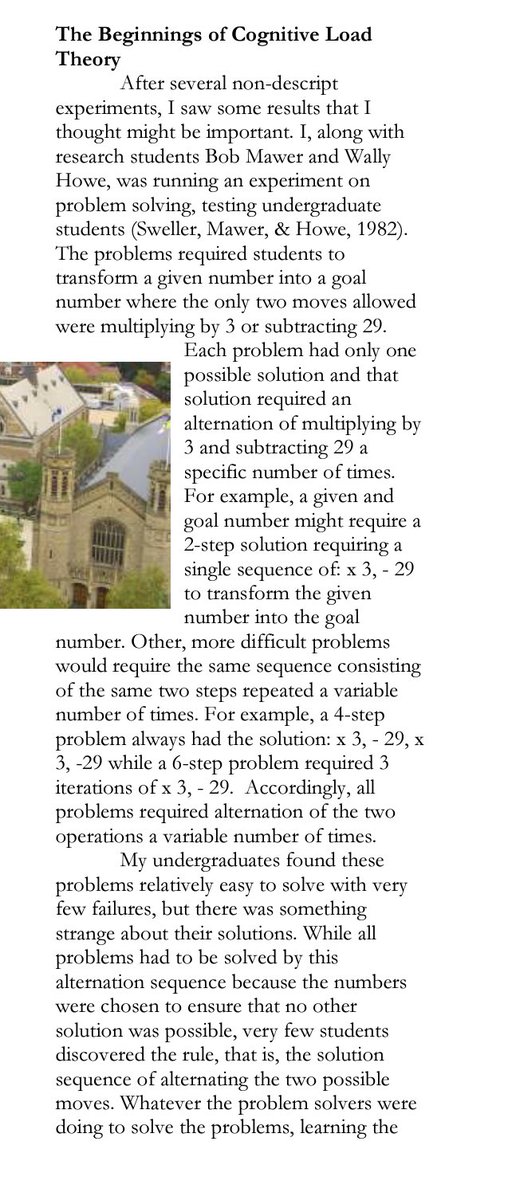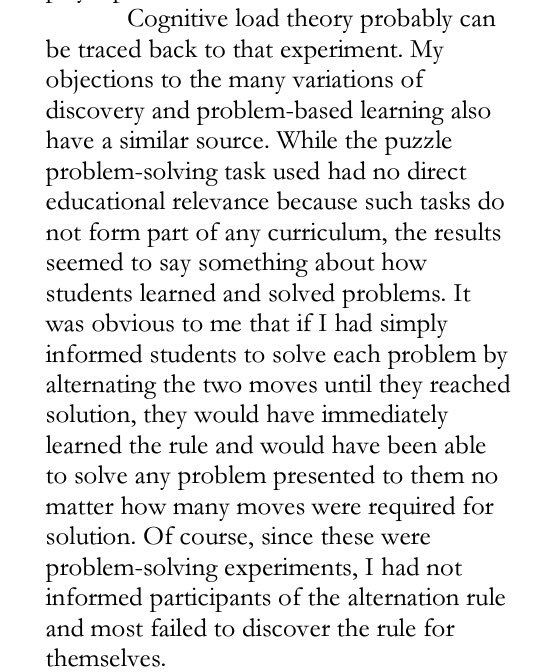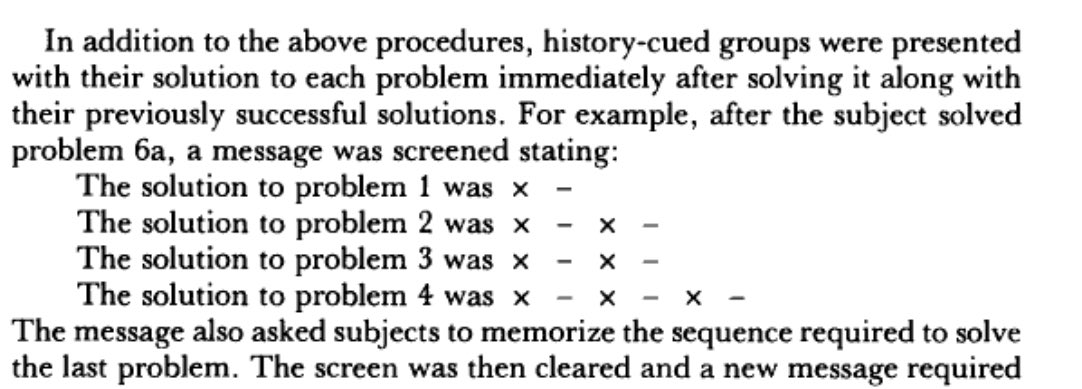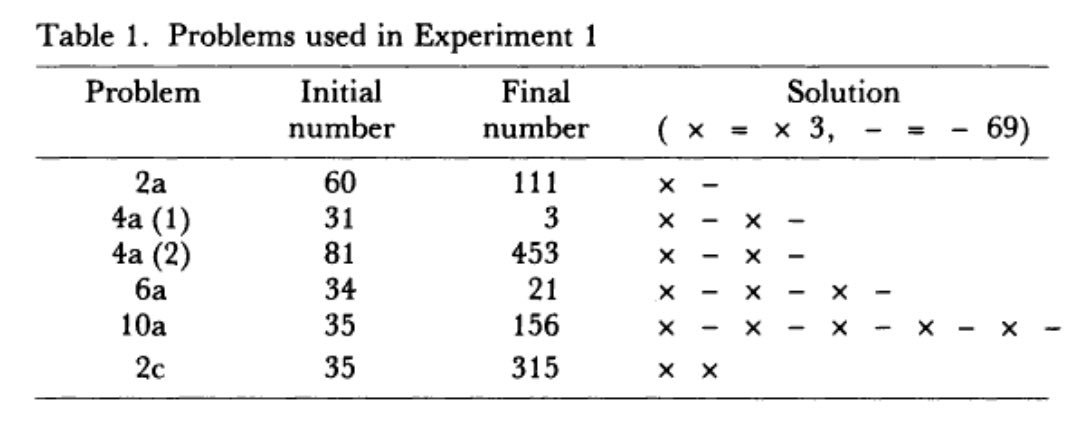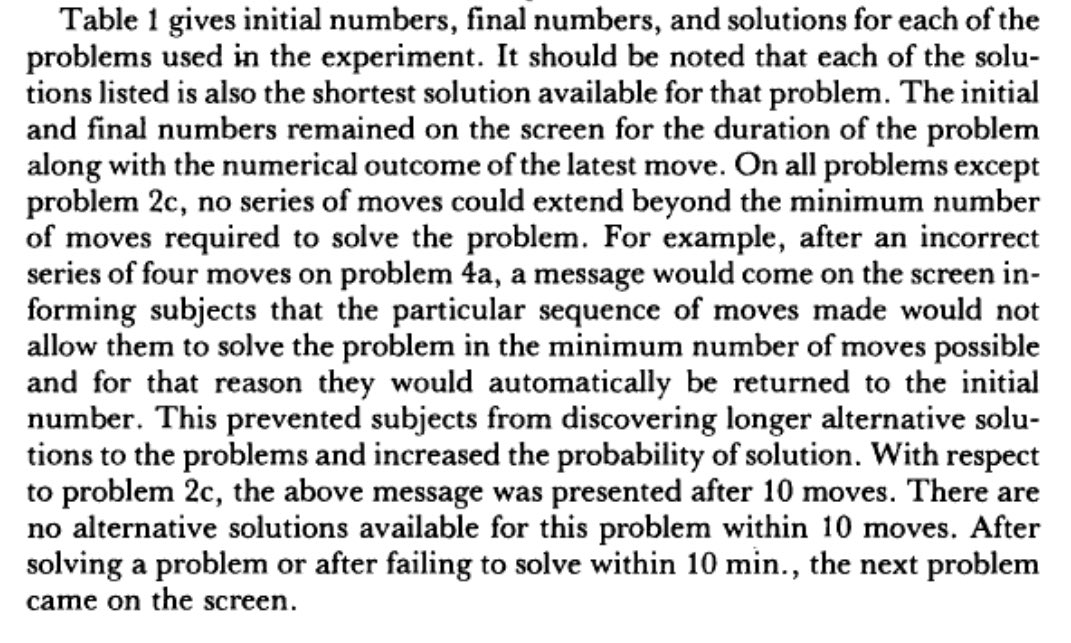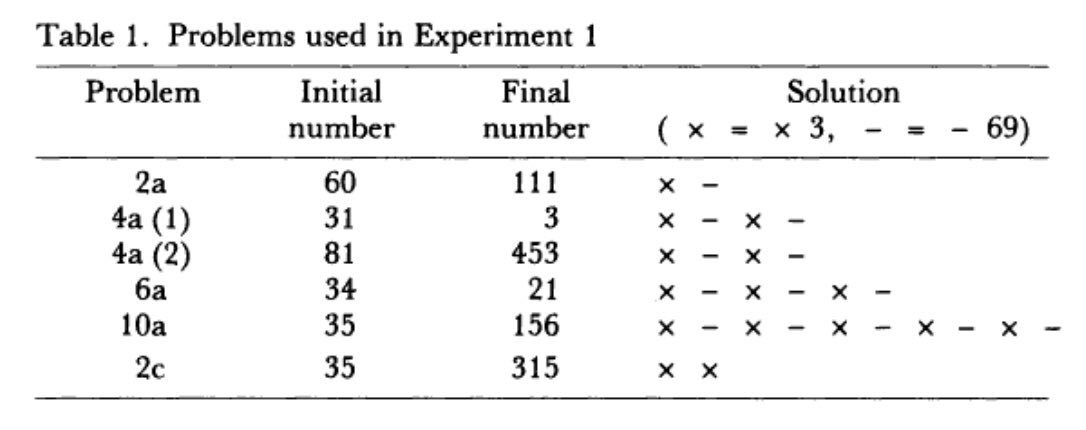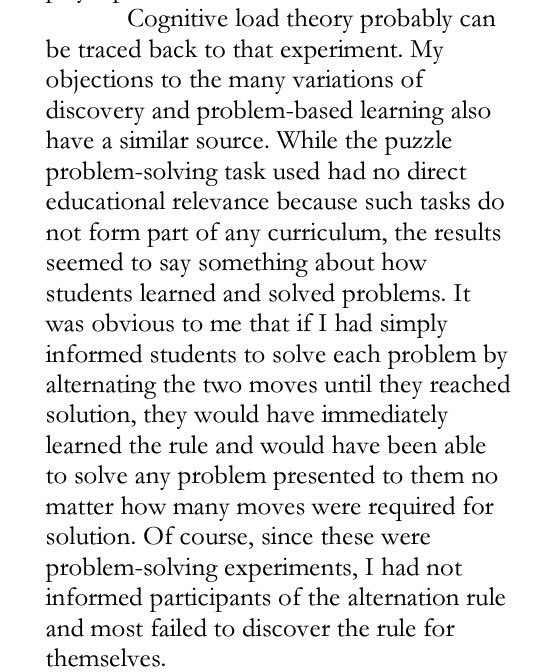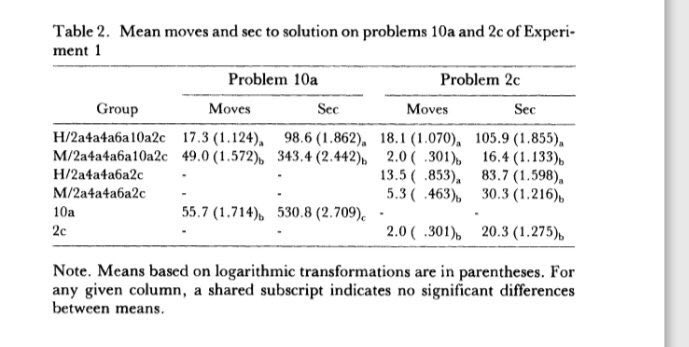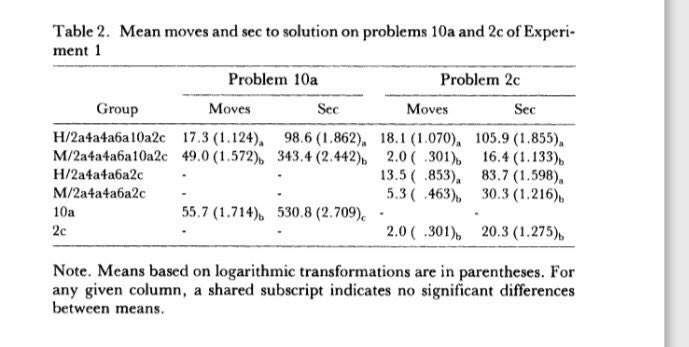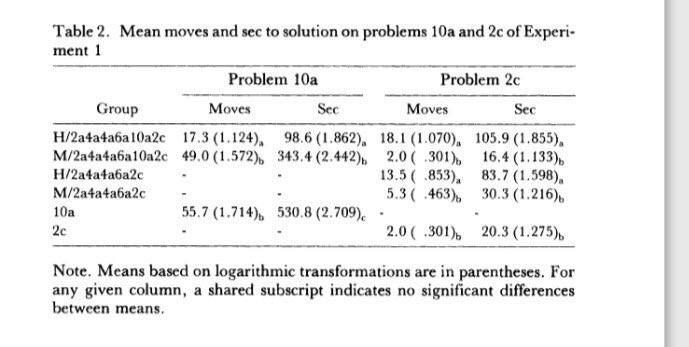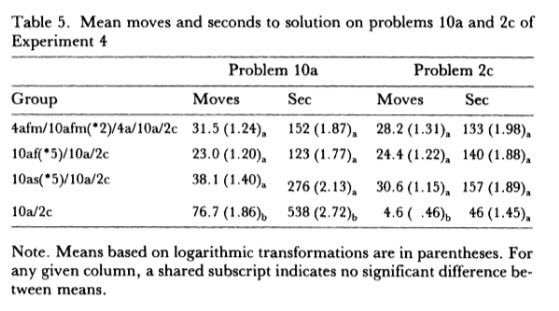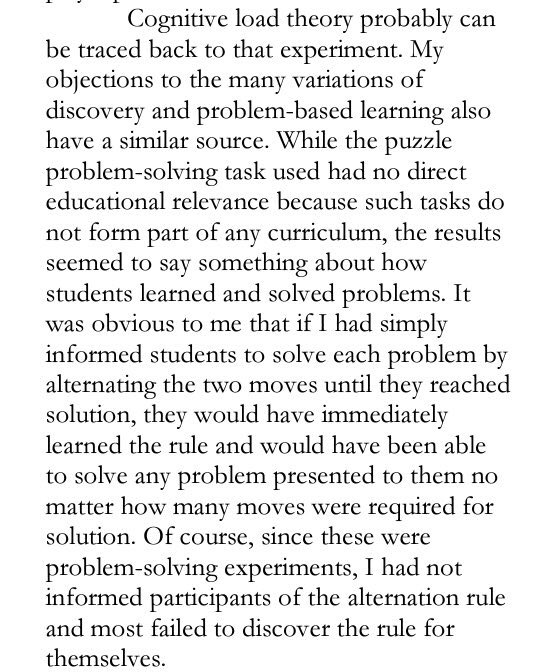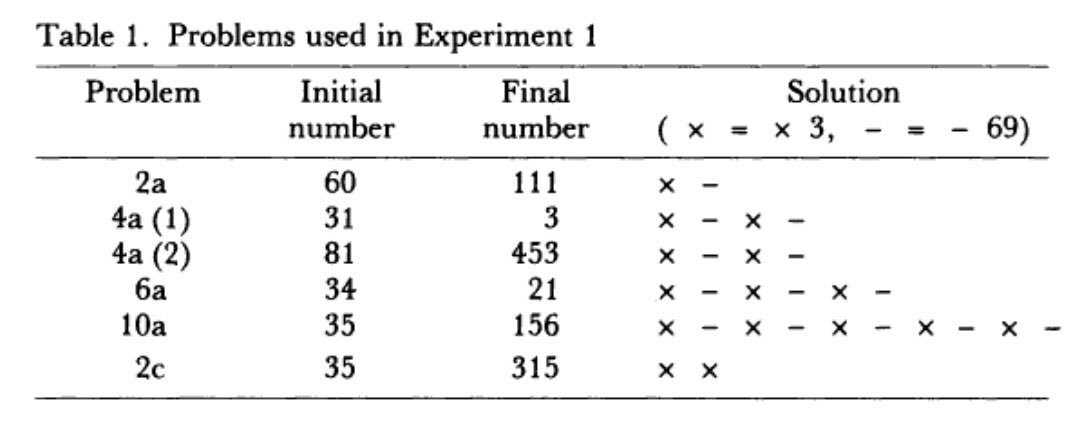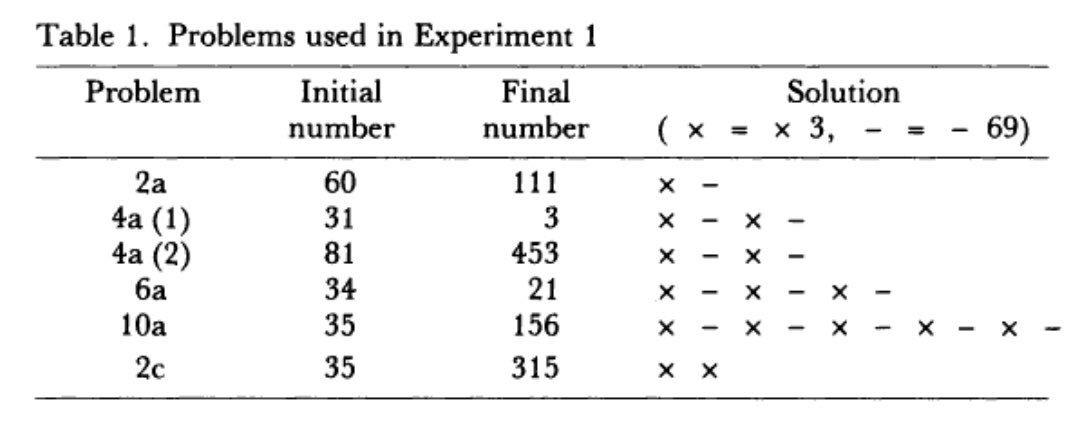I have analysed Sweller et al (1982) in so much detail, and it would be so complex to *write* a clear blog on it, that I’m considering doing a vidcast, narrating my thoughts while going through the paper....
The key task is described in Sweller’s ‘story’ http://edrev.asu.edu/index.php/ER/article/download/2025/545">https://edrev.asu.edu/index.php...
But I find that quite strange, to be honest.
First the comment in the last sentence. He might not have told the rule beforehand but if I have read it correctly (Sweller et al. Is here
https://www.jstor.org/stable/1422136 )">https://www.jstor.org/stable/14... then the so-called ‘history-cued’ condition does ‘tell’ een awful lot.
First the comment in the last sentence. He might not have told the rule beforehand but if I have read it correctly (Sweller et al. Is here
https://www.jstor.org/stable/1422136 )">https://www.jstor.org/stable/14... then the so-called ‘history-cued’ condition does ‘tell’ een awful lot.
See here. So “I’m not saying that it’s alternating but look at all those problems, do you spot the pattern, now try the next one....”
You think they’re going to try x - x - x - ?
You think they’re going to try x - x - x - ?
But ok, before that last sentence Sweller does say that simply ‘informing’ would help students solve such problem. Yes that is true, see the table in the next tweet.
Some explanation. There were 6 groups of 12 (!) undergraduate students. The groups are on the left. The H is ‘history-cued’, the M is ‘means-end’. The former group gets infirmation ‘along the way’ as in a previous tweet. The latter just looks at the goal and tries...
Maybe some would call that ‘trial-and-error’ but I think it can be more systematic than that. You have to do it yourself. Behind the M and H in the table you see what type of sequences follow. So 2a means a 2-move task alternating...
So if the ‘moves’ are x3 and -11, 2a would denote starting with a number times 3 minus 11.
Imagine the target then would be 10 and then participants would have to find out how they could make 10 from a start number 7 with those ‘moves’...
Imagine the target then would be 10 and then participants would have to find out how they could make 10 from a start number 7 with those ‘moves’...
On the left you can see what type of tasks participants would get, so for example the first two groups got increasingly longer sequences, the middle 2 groups intermediate, bottom 2 groups just one type....
There is one more thing to explain, 2c, that task the operations would not alternate but be consecutive. Some examples tasks are here with start number and final number, and solution of moves.
By the way, this seems important as well, the fact that you were not allowed to continue if for say a 4a task you had done 4 moves but done incorrectly....
Cos let’s look at 4a with start number 31 and goal 3.
Yes, 31x3=93; 93-69=24; 24x3=72; 72-69=3.
But ((31x3-69)x3)-69=31x3x3-69-69-69-69 shows that
Yes, 31x3=93; 93x3=279; 279-69-69-69-69=3, another solution in 6 moves....
Yes, 31x3=93; 93-69=24; 24x3=72; 72-69=3.
But ((31x3-69)x3)-69=31x3x3-69-69-69-69 shows that
Yes, 31x3=93; 93x3=279; 279-69-69-69-69=3, another solution in 6 moves....
Of course by asking for the minimum number of moves 6 would not be the most efficient but given the last sentence, why would you disallow that. This is also noted in https://scholarworks.umt.edu/tme/vol16/iss1/30/">https://scholarworks.umt.edu/tme/vol16... by the way.
OK, so critical points are now *how much* ‘history-cued’ groups were helped and also the nature of problem-solving, but let’s assume we are all fine with it and now look at the empirical data again. The main comparison concerned moves and time taken for two problems 10a and 2c.
Yes, we can see at the top left that the H group takes less moves and seconds for problem 10a. But wouldn’t that be logical? They were almost primed to try to continue with alternating. I guess some would say this is the advantage of ‘just informing the students’ (explicit!)
But do you notice results for task 2c? It’s the other way round. Could it be that continued explicit instruction in some way means that some flexibility is lost? So that what we perhaps could call priming leads to more moves and seconds for the simple problem that looks different
There was another experiment. Again 10a without telling/priming took longer, but 2c with telling/priming took longer.
Back to how some have formulated the findings from the original study. Impossible to unpick everything, but I think this summary is not ‘complete’.
Firstly, it is a rather narrow view of ‘problem solving’. Secondly, if we accept it at ‘problem solving’ for some tasks instruction helped for others it obstructed what I would call ‘non routine’ tasks in the study.
Very cautiously I would posit that practice and worked examples of course should be used, but that some challenge and flexibility should not lead to over-reliance and unwarranted assumptions. I think most summaries of the seminal Sweller et al (1982) are quite one-sided.
Happy to read any corrections in my thinking.
PS1 lest someone thinks I don& #39;t like this work. It& #39;s great, otherwise wouldn& #39;t have invested hours. Most of the 80s Sweller et al. stuff is. To me number of moves and time seems a more credible metric than from 1992 a self reported mental load Likert scale.
PS2 on means-end analysis. This is often presented as some completely random ‘problem search’, but I don’t think that is a very realstic assumption. Let’s look at these tasks again, for example 4a (1), starting with 31 and ending with 3...
So I think many students will instantly see that doing -69 results in a negative number (were they allowed) and so would start with x3. But because 93 is quite large, a next attempt probably -69.
My point, it is not *just* a guess but an *educated* guess.
My point, it is not *just* a guess but an *educated* guess.
It’s the *educated* that consists of knowledge of numbers, a systematic approach etc. Such things can also be cultivated, of course.
In a sense it really is remarkable that those that were ‘history-cued’ did more poorly on 2c tasks. After all, an ‘educated guess’ approach would probably argue. Start with 35. Can’t subtract 69, so times 3 is 105. Hey 315 is more...and 3 times more, so times 3 again...sorted.
It would be fairly simple to program this in an online task nd then let ppl take the task sequences, randomly allocated...

 Read on Twitter
Read on Twitter